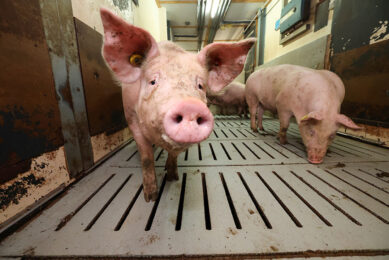3 things pig farm writers should never forget

Just over a month ago, pig management expert looked back to his 3,000 articles he wrote ever since he started writing about pigs. In this follow up I reveal how I, as a consultant, as on-farm adviser managed to earn a living from advice. How could he afford to give away hard-won information every month?
And surprisingly I have always managed to do so. First, there is an awful lot of information out there, so it is there to be ‘given away’ once I have located it. There is always plenty more to replace it/ add to it/ argue over its advantages and demerits.

John Gadd and his 3,000 articles on pigs – read here what he had to say late September
Writing about new developments always stimulates discussion from readers and the farms I visit. Especially the visits, which opened up a whole new writing opportunity for me some 40 years ago. I’ll describe this in a minute. Writing is rather like acting. I never count on a new idea as properly exhausted descriptively until it is ‘sold’ about 6 times.
Selling the articles on pigs 6 times
An actor can play many parts. Writing can be just like an actor donning a different costume for each part he can play. An idea can be written several ways. Straight prose; scientific-ese; question and answer; pictorial with captions; an interview; comparison with past practice. I don’t count an idea fully exploited until it is written and despatched several times over.
Also this has the advantage that editors will not baulk at the same article being farmed out to a competitive journal. The idea is, but done in a different manner. It is not the writing that is important, but acquiring the subject. That takes money, time and effort. Selling it several times over pays for it all.
What a pig commentator should remember
There are 3 things a present day commentator needs to remember.
1. Write things down!
All my life I have been not only a ‘writerholic’ but also a dedicated ‘squirrel’ collecting information. I write everything down. I leave nothing to memory. Having kept a lifetime diary has shown me how fickle a memory can be. My own experiences of a lifetime in learning about pig farming and also from all the thousands of clients who have asked me to advise them, have all been carefully recorded in a daily diary – my ‘Omnium Gatherum’, now of 158 volumes.
2. Trials, trials, trials
Second, I have long been concerned about some of the on-farm pig trial work being published by commercial firms, uncertain if they were set up properly, carried out diligently (i.e. what were the temperatures and stocking densities, water supply and location are rarely mentioned) or results reported statistically.
Frankly, are many of them worth the paper they are written on? Within the laws of chance? Meaningless! And always positive to the vendor’s product, which raises suspicions of weighted, selected, favourable results. Thus over three decades I persuaded a collection of helpful clients who lent me their facilities to do the same work under controlled conditions which I and my advisers considered as ‘safe’. These results and the discussions they raise provide plenty of interesting information I can use, privately or publicly if I wish to raise a stir.

Visit our large database of recorded pig farm visits
3. Recorded information on pig farm visits
A third area is a huge source of written material for me – that of recorded information. So many of the records we use (if we use them at all) are out of date and need a good spring clean. Not only do we need a universal set of figures based on the same agreed precepts internationally (for example, there are no less than four different start points used today from when a female enters the breeding herd) but trial results should carry with them some guidance towards value for money.
“Impossible”, say the purists, “as fiscal matters are different across nations, thus economic comparisons are worthless.”
Not so, because useful comparisons can be made between farms let alone pig industries, if the researcher applies an economic matrix to his result on to which the farmer for any nation can insert his own local figures. Profit not necessarily performance is the secret of future record comparison. Good performance alone can mislead – it may cost too much to achieve it. Which is why we need a clean-up of the current measurement terms we use, and move with the very profit-dominated times.
Interested to read more Expert Opinions? Browse between the updates from other global pig experts
The secret in maintaining the readers interest is…
Variation, that is just hard work! Thinking yourself into the readers’ shoes. How can I describe technical things in language he can understand? This comes from successful consultancy work where you have to convince the producer to do what is best for him; that way you get asked back again – repeat business.
Lastly, using the ‘what if’ concept. It makes people think outside the box.











